 So do I stick my head into that glass-enclosed rectangular box? Will it fry my brain? Or will the damage show up in 20 years? Will my head come out looking like those primitive shrunken heads that repelled and fascinated me as a child? I’ve volunteered to have my head 3-D printed, and am checking out the equipment at the State University of New York. As it turns out—great relief—I don’t have to stick my head into the box after all; that’s where the “printing” occurs, not the scanning. The professor tells me to just sit upright and stay super still on a chair for a little over a minute, while his assistant uses a hand-held scanner—making several passes of the sides and top of my head and neck from about 30 inches away. In a couple minutes, the glass box starts to make noise and comes alive. The “printing” begins. For the color of my little sculpted head, I’m given a choice of red or white. Red seems a bit creepy, so I go for white. The plastic substance is long and cord-like, about 1/8 inch in diameter, and wrapped around a big spool at the back of the printer. One thin white layer after the other is laid down. It builds up, and slowly a tiny replica of my head begins to take shape. Half an hour, and it’s done. Sure enough, this looks like a miniature Roxie, about 2 inches high, with a flat back where it lay down on the printer, although the machine appeared to have quit just before it reached the tip of my nose, which is kind of cut off. So what can be done with this new kind of printing? Well, it is already being used in dentistry for making crowns. Jewelry can be created from metals, even gold. You can actually make plastic guns using this method. Unfortunately (or should I say fortunately), they don’t work very well—the plastic gets distorted rapidly from the heat and action of shooting a bullet. But maybe the most fun is making food. Nursing homes in Germany are taking pureed food and making it into appetizing shapes. NASA is researching making 3-D pizza in space. Instead of white plastic maybe I should have asked for chocolate—and turned myself into a delicious dessert. Roxie and her mini-me. (c) Roxie Munro 2014 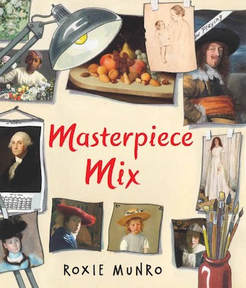 Using works from the National Gallery of Art by Vincent Van Gogh, Mary Cassatt, Edward Hopper, and others, Roxie Munro has created an innovative introduction to art. As an artist contemplates her next painting, she introduces genres and subjects, showcasing reproductions of great works. The sweeping painting she creates cleverly incorporates all 37 pieces she has considered. Children can have fun finding the masterpieces in her painting and learn more about the artists in the notes in the back matter. Read a review here. MLA 8 Citation Munro, Roxie. "Getting Your Head 3-D Printed." Nonfiction Minute, iNK Think Tank, 20 Sept. 2017, www.nonfictionminute.org/the-nonfiction-minute/getting-your-head-3-d-printed.
2 Comments
 How often do you check your cell phone or email each day? Use Twitter or Facebook? Can you stand not to “stay in touch” for even one day? We’re used to being able to hear from people anywhere in the world at any time, with just a few taps on a keyboard or telephone pad. Through most of human history people could only communicate when they were within shouting distance. When alphabets came along, our ancestors could create messages on stone or wood and later on parchment (made from animal skin), or paper, made from wood pulp. Then, of course, the message had to get from one person to another by way of a messenger. When public mail came along, it made that process much easier and more reliable. That’s where things stood for a long time. Imagine being a soldier in 1804 joining explorers Meriwether Lewis and William Clark on their epic trek across the west to the Pacific Coast. This was territory almost totally unknown at the time to European Americans. You’ve left behind your family and all your friends. Now you have no way of finding out what happened to those dear to you. Did your father or mother die? Did a sister get married? How many babies were born? Your loved ones get to be a bit luckier, since in the spring of 1805, the keel boat that carried the expedition to Indian villages for the winter is sent back down the Missouri River with a small crew, and you get a chance to write notes to your loved ones, reassuring them that you are okay. A lot can happen during a 2½ year span like the one endured by members of the expedition! Finally, in September of 1806, you and your colleagues return to the St. Louis area and find out that most people assumed you were all dead. Now you must figure out as quickly as possible how to reconnect with family and friends. It won’t be easy, since they don’t know you are alive, and you don’t know where they are after so long. How can you even locate everyone you care about? Think about it: If you didn’t have email or a phone of any kind, whose messages would you miss the most? And who would you most wish you could tell about these events in your life?  Dorothy has written about how the horse changed the lives of the Plains Indians and everything that followed. Dorothy Hinshaw Patent is a member of iNK's Authors on Call and is available for classroom programs through Field Trip Zoom,a terrific technology that requires only a computer, wifi, and a webcam. Click here to find out more. MLA 8 Citation Patent, Dorothy Hinshaw. "Keeping in Touch." Nonfiction Minute, iNK Think Tank, 4 Oct. 2017, www.nonfictionminute.org/the-nonfiction-minute/keeping-in-touch. Henry Ford is famous for founding the Ford Motor Company in 1903. He built the Model T and changed America from a horse-and-buggy country to a nation of paved roads and honking cars. Yet most people don’t realize that Henry also transformed American agriculture with his work with soybeans. During the Great Depression of the 1930s many farmers lost their farms or left crops to rot because they cost too much to harvest. Henry thought this was a waste, so he began to look for ways that common crops could be used in industry. He built a laboratory at Greenfield Village, and studied the chemical makeup of every fruit, grain and vegetable. After two years, Henry found the: the soybean! It was the perfect crop to use in his factories because it was packed with oil and protein. The oil made a paint that was glossier, less expensive, and dried to a harder finish than other coatings. By 1934, every new Ford boasted a coat of soybean paint. The soy protein, mixed with a chemical resin, created a sturdy plastic. Soon cars had soybean plastic gearshift knobs, light switches and horn buttons. Ford claimed that every car contained a bushel of soybeans. But Henry wanted a car that was all soybeans. To do this he had to make large plastic panels, which took longer to perfect. The first panels cracked. But eventually Henry had a plastic trunk lid attached to his car so he could show people how sturdy it was. He even hit it with an ax and didn’t make a dent. Henry affixed fourteen plastic panels to a steel frame, and showed off his new car on August 13, 1941. Unfortunately the car was never manufactured. Four months later America entered World War II. The soybean plastic car rolled into storage, its steel frame recycled in the war effort. Henry died shortly after the war, and no one continued his work on the plastic car. But his soybean research did spark a movement to use soy in manufacturing, which made soybeans the second largest crop grown in America. Furniture, flooring, candy, crayons, and all kinds of food contain soy. And even though we don’t drive soybean plastic cars yet, there are still plenty of beans in every Ford. All their seats are stuffed with soybean plastic foam. See Henry’s car here. 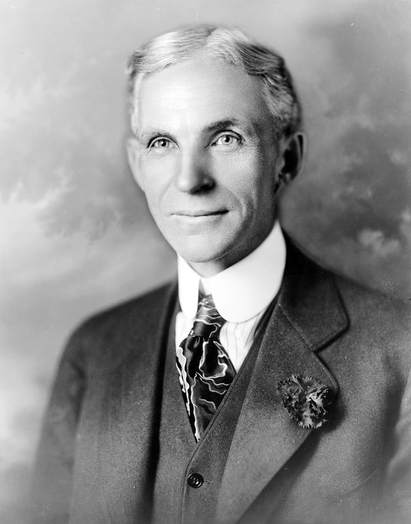 Henry Ford (July 30, 1863 – April 7, 1947) was an American captain of industry and a business magnate, the founder of the Ford Motor Company, and the sponsor of the development of the assembly line technique of mass production. By Hartsook, photographer via Wikimedia Commons The world's first car made of what was called agricultral plastic is shown in February 1942. The plastic was a strong material combining soy beans, wheat and corn. Although the car never caught on, it was lighter and therefore more fuel efficient than the standard metal body. Wikimedia Commons Despite the practical benefits of a car made out of food products (fuel efficiency and the conservation of steel that was scarce during World War II), the idea was the source of a lot of good-natured humor. From the Collections of The Henry Ford 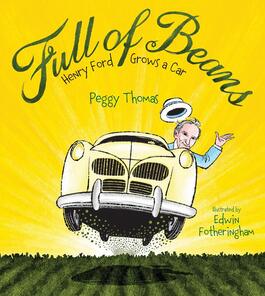 Peggy Thomas is the author of such award-winning titles as Farmer George Plants a Nation, and For the Birds, the life of Roger Tory Peterson. Her newest book is Full of Beans: The Story of How Henry Ford Grew a Car, illustrated by Edwin Fotheringham. Vicki Cobb reviewed it. For more information about Peggy, check out her website: www.peggythomaswrites.com |
*NEWS
|
For Vicki Cobb's BLOG (nonfiction book reviews, info on education, more), click here: Vicki's Blog
The NCSS-CBC Notable Social Studies Committee is pleased to inform you
that 30 People Who Changed the World has been selected for Notable Social Studies Trade Books for Young People 2018, a cooperative project of the National Council for the Social Studies (NCSS) & the Children’s Book Council
Categories
All
Abolitionists
Adams Janus
Adaptation
Adaptations
Adkins Jan
Advertising
Aerodynamics
Africa
African American History
African Americans
Africa West
Agriculture
Aircraft
Air Pilots
Air Pressure
Air Travel
Albee Sarah
Alchemy
Alligators
Allusion
American History
American Icons
Amphibians
Amundsen Roald
Anatomy
Ancient
Ancient Cultures
Anderson Marian 1897-1993
Animal Behavior
Animal Experimentation
Animal Intelligence
Animals
Animation
Antarctica
Ants
Apache Indians
Apes
April Fool's Day
Architecture
Argument
Arithmetic
Art
Art Deco
Artists
Arts
Asia
Astronauts
Astronomy
Athletes
Atomic Theory
Audubon Societies
Authors
Autobiography
Automobiles
Aviation
Awards
Bacteria
Baseball
Battuta Ibn
Bears
Beatles
Beavers
Bees
Biodegradation
Biography
Biology
Biomes
Biomimicry
Biplanes
Birds
Black Death
Black History
Blindness
Blizzards
Bombs
Bonaparte Napoleon
Boone Daniel
Botany
Brazil
Bridges
Brill Marlene Targ
Brooklyn Bridge
Brown John
Buffaloes
Building Materials
Butterflies
Caesar
Caesar Julius
Caissons
Calculus
Calendars
Cannibal
Capitals
Caravaggio
Carbon Dioxide
Carnivores
Carson Mary Kay
Cartoons & Comics
Carving (Decorative Arts)
Cascade Range
Castaldo Nancy
Castles
Castrovilla Selene
Cathedrals
Cats
Caves
Celts
Cemeteries
Chemistry
Children's Authors
Child Welfare
China
Choctaw Indians
Christmas
Chronometers
Cicadas
Cinco De Mayo
Ciphers
Circle
Citizenship
Civil Rights
Civil Rights Movements
Civil War
Civil War - US
Climate
Climate Change
Clocks And Watches
Clouds
Cobb Vicki
COBOL (Computer Language)
Code And Cipher Stories
Collard III Sneed B.
Collectors And Collecting
Color
Commerce
Communication
Competition
Compilers
Composers
Computers
Congressional Gold Medal
Consitution
Contests
Contraltos
Coolidge Calvin
Cooling
Corms
Corn
Counterfeiters
Covid-19
Crocodiles
Cryptography
Culture
Darwin Charles
Declaration Of Independence
Decomposition
Decompression Sickness
Deep-sea Animals
Deer
De Medici Catherine
Design
Detectives
Dickens Charles
Disasters
Discrimination
Diseases
Disney Walt
DNA
Dogs
Dollar
Dolphins
Douglass Frederick 1818-1895
Droughts
Dr. Suess
Dunphy Madeleine
Ear
Earth
Earthquakes
Ecology
Economics
Ecosystem
Edison Thomas A
Education
Egypt
Eiffel-gustave-18321923
Eiffel-tower
Einstein-albert
Elephants
Elk
Emancipationproclamation
Endangered Species
Endangered-species
Energy
Engineering
England
Englishlanguage-arts
Entomology
Environmental-protection
Environmental-science
Equinox
Erie-canal
Etymology
Europe
European-history
Evolution
Experiments
Explorers
Explosions
Exports
Extinction
Extinction-biology
Eye
Fairs
Fawkes-guy
Federalgovernment
Film
Fires
Fishes
Flight
Floods
Flowers
Flute
Food
Food-chains
Foodpreservation
Foodsupply
Food-supply
Football
Forceandenergy
Force-and-energy
Forensicscienceandmedicine
Forensic Science And Medicine
Fossils
Foundlings
France
Francoprussian-war
Freedom
Freedomofspeech
French-revolution
Friction
Frogs
Frontier
Frontier-and-pioneer-life
Frozenfoods
Fugitiveslaves
Fultonrobert
Galapagos-islands
Galleys
Gametheory
Gaudi-antoni-18521926
Gender
Generals
Genes
Genetics
Geography
Geology
Geometry
Geysers
Ghosts
Giraffe
Glaciers
Glaucoma
Gliders-aeronautics
Global-warming
Gods-goddesses
Gold-mines-and-mining
Government
Grant-ulysses-s
Grasshoppers
Gravity
Great-britain
Great-depression
Greece
Greek-letters
Greenberg Jan
Hair
Halloween
Handel-george-frederic
Harness Cheryl
Harrison-john-16931776
Health-wellness
Hearing
Hearing-aids
Hearst-william-randolph
Henry-iv-king-of-england
Herbivores
Hip Hop
History
History-19th-century
History-france
History-world
Hitler-adolph
Hoaxes
Holidays
Hollihan Kerrie Logan
Homestead-law
Hopper-grace
Horses
Hot Air Balloons
Hot-air-balloons
Housing
Huguenots
Human Body
Hurricanes
Ice
Icebergs
Illustration
Imagery
Imhotep
Imperialism
Indian-code-talkers
Indonesia
Industrialization
Industrial-revolution
Inquisition
Insects
Insulation
Intelligence
Interstatecommerce
Interviewing
Inventions
Inventors
Irrational-numbers
Irrigation
Islands
Jacksonandrew
Jazz
Jeffersonthomas
Jefferson-thomas
Jemisonmae
Jenkins-steve
Jet-stream
Johnsonlyndonb
Jokes
Journalism
Keeling-charles-d
Kennedyjohnf
Kenya
Kidnapping
Kingmartinlutherjr19291968
Kingmartinlutherjr19291968d6528702d6
Kings-and-rulers
Kings Queens
Kings-queens
Koala
Labor
Labor Policy
Lafayette Marie Joseph Paul Yves Roch Gilbert Du Motier Marquis De 17571834
Landscapes
Languages-and-culture
Law-enforcement
Layfayette
Levers
Levinson Cynthia
Lewis And Clark Expedition (1804-1806)
Lewis Edmonia
Liberty
Lift (Aerodynamics)
Light
Lindbergh Charles
Liszt Franz
Literary Devices
Literature
Lizards
Longitude
Louis XIV King Of France
Lumber
Lunar Calendar
Lynching
Macaws
Madison-dolley
Madison-james
Madison-james
Mammals
Maneta-norman
Maneta-norman
Marathon-greece
Marine-biology
Marine-biology
Marines
Marsupials
Martial-arts
Marx-trish
Mass
Massachusetts-maritime-academy
Mass-media
Mastodons
Mathematics
May-day
Mcclafferty-carla-killough
Mcclafferty-carla-killough
Mckinley-william
Measurement
Mechanics
Media-literacy
Media-literacy
Medicine
Memoir
Memorial-day
Metaphor
Meteorology
Mexico
Mickey-mouse
Microscopy
Middle-west
Migration
Military
Miners
Mississippi
Molasses
Monarchy
Monsters
Montgomery
Montgomery-bus-boycott-19551956
Montgomery-heather-l
Monuments
Moon
Moran-thomas
Morsecode
Morsesamuel
Moss-marissa
Moss-marissa
Motion
Motion-pictures
Mummies
Munro-roxie
Munro-roxie
Musclestrength
Museums
Music
Muslims
Mythologygreek
Nanofibers
Nanotechnology
Nathan-amy
Nathan-amy
Nationalfootballleague
Nationalparksandreserves
Nativeamericans
Native-americans
Native-americans
Naturalhistory
Naturalists
Nature
Nauticalcharts
Nauticalinstruments
Navajoindians
Navigation
Navy
Ncaafootball
Nervoussystem
Newdeal19331939
Newman-aline
Newman-aline
Newton-isaac
New-york-city
Nobelprizewinners
Nomads
Nonfictionnarrative
Nutrition
Nylon
Nymphs-insects
Oaths Of Office
Occupations
Ocean
Ocean-liners
Olympics
Omnivores
Optics
Origami
Origin
Orphans
Ottomanempire
Painters
Painting
Paleontology
Pandemic
Paper-airplanes
Parksrosa19132005
Parrots
Passiveresistance
Patent Dorothy Hinshaw
Peerreview
Penguins
Persistence
Personalnarrative
Personification
Pets
Photography
Physics
Pi
Pigeons
Pilots
Pinkertonallan
Pirates
Plague
Plains
Plainsindians
Planets
Plantbreeding
Plants
Plastics
Poaching
Poetry
Poisons
Poland
Police
Political-parties
Pollen
Pollution
Polo-marco
Populism
Portraits
Predation
Predators
Presidentialmedaloffreedom
Presidents
Prey
Prey-predators
Prey-predators
Prime-meridian
Pringle Laurence
Prohibition
Proteins
Protestandsocialmovements
Protestants
Protestsongs
Punishment
Pyramids
Questioning
Radio
Railroad
Rainforests
Rappaport-doreen
Ratio
Reading
Realism
Recipes
Recycling
Refrigerators
Reich-susanna
Religion
Renaissance
Reproduction
Reptiles
Reservoirs
Rheumatoidarthritis
Rhythm-and-blues-music
Rice
Rivers
Roaringtwenties
Roosevelteleanor
Rooseveltfranklind
Roosevelt-franklin-d
Roosevelt-theodore
Running
Russia
Safety
Sanitation
Schwartz David M
Science
Scientificmethod
Scientists
Scottrobert
Sculpture
Sculpturegardens
Sea-level
Seals
Seals-animals
Secretariesofstate
Secretservice
Seeds
Segregation
Segregationineducation
Sensessensation
September11terroristattacks2001
Seuss
Sextant
Shackletonernest
Shawneeindians
Ships
Shortstories
Silkworms
Simple-machines
Singers
Siy Alexandra
Slavery
Smuggling
Snakes
Socialchange
Social-change
Socialjustice
Social-justice
Socialstudies
Social-studies
Social-studies
Sodhouses
Solarsystem
Sound
Southeast-asia
Soybean
Space Travelers
Spain
Speech
Speed
Spiders
Spies
Spiritualssongs
Sports
Sports-history
Sports-science
Spring
Squirrels
Statue-of-liberty
STEM
Storms
Strategy
Sugar
Sumatra
Summer
Superbowl
Surgery
Survival
Swanson-jennifer
Swinburne Stephen R.
Synthetic-drugs
Taiwan
Tardigrada
Tasmania
Tasmanian Devil
Tasmanian-devil
Technology
Tecumsehshawneechief
Telegraph-wireless
Temperature
Tennis
Terrorism
Thomas Peggy
Thompson Laurie Ann
Time
Titanic
Tombs
Tortoises
Towle Sarah
Transcontinental-flights
Transportation
Travel
Trees
Trung Sisters Rebellion
Tundra
Turnips
Turtles
Typhoons
Underground Railroad
Us-environmental-protection-agency
Us History
Us-history
Ushistoryrevolution
Us History Revolution
Us-history-war-of-1812
Us Presidents
Ussupremecourtlandmarkcases
Vacations
Vaccines
Vangoghvincent
Vegetables
Venom
Vietnam
Viruses
Visual-literacy
Volcanoes
Voting-rghts
War
Warne-kate
Warren Andrea
Washington-dc
Washington George
Water
Water-currents
Wax-figures
Weapons
Weather
Weatherford Carole Boston
Whiting Jim
Wildfires
Winds
Windsor-castle
Wolves
Woman In History
Women
Women Airforce Service Pilots
Women-airforce-service-pilots
Womeninhistory
Women In History
Women-in-science
Women's History
Womens-roles-through-history
Wonder
Woodson-carter-godwin-18751950
World-war-i
World War Ii
World-war-ii
Wright Brothers
Writing
Writing-skills
Wwi
Xrays
Yellowstone-national-park
Zaunders Bo
ArchivesMarch 2021
February 2021
January 2021
December 2020
November 2020
October 2020
September 2020
June 2020
May 2020
April 2020
March 2020
February 2020
January 2020
December 2019
October 2019
September 2019
August 2019
July 2019
May 2019
April 2019
March 2019
February 2019
January 2019
December 2018
November 2018
September 2018
June 2018
May 2018
April 2018
March 2018
February 2018
January 2018
December 2017
November 2017
October 2017
September 2017
March 2017
The NONFICTION MINUTE, Authors on Call, and. the iNK Books & Media Store are divisions of iNK THINK TANK INC.
a 501 (c) (3) nonprofit corporation. To return to the iNK Think Tank landing page click the icon or the link below. :
http://inkthinktank.org/
For more information or support, contact thoughts@inkthinktank.org
For Privacy Policy, go to
Privacy Policy
© COPYRIGHT the Nonfiction Minute 2020.
ALL RIGHTS RESERVED.
This site uses cookies to personalize your experience, analyze site usage, and offer tailored promotions. www.youronlinechoices.eu
Remind me later
Archives
March 2023
February 2023
January 2023
December 2022
November 2022
October 2022
September 2022
June 2022
May 2022
April 2022
March 2022
February 2022
January 2022
December 2021
November 2021
September 2021
April 2021
March 2021
February 2021
November 2020
October 2020
September 2020
June 2020
May 2020
April 2020
March 2020
February 2020
January 2020
October 2019
August 2019
July 2019
May 2019
April 2019
December 2018
September 2018
June 2018
May 2018
March 2018
February 2018
January 2018
December 2017
November 2017
October 2017
September 2017


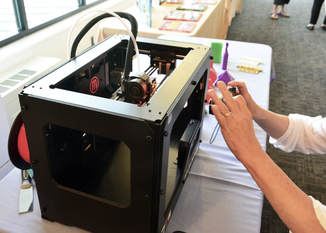
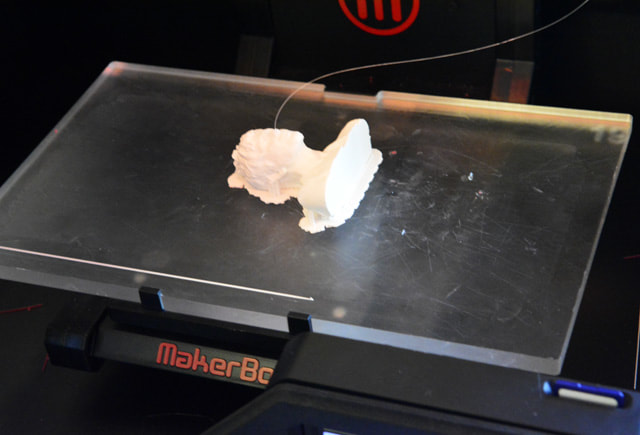

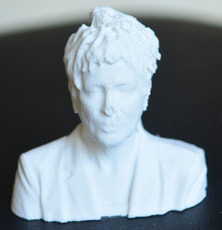
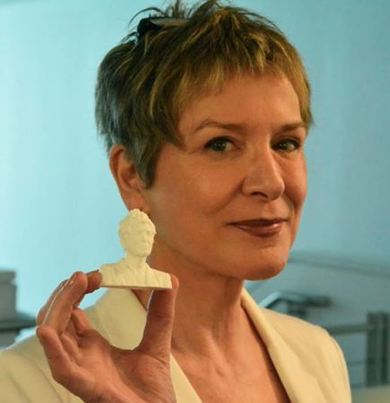


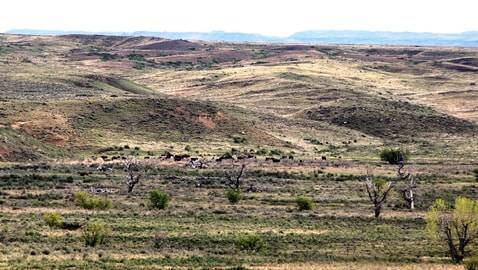
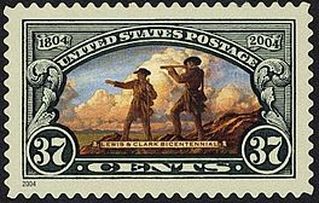

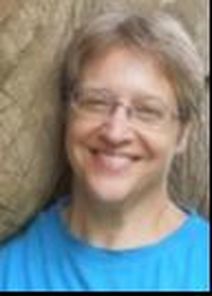

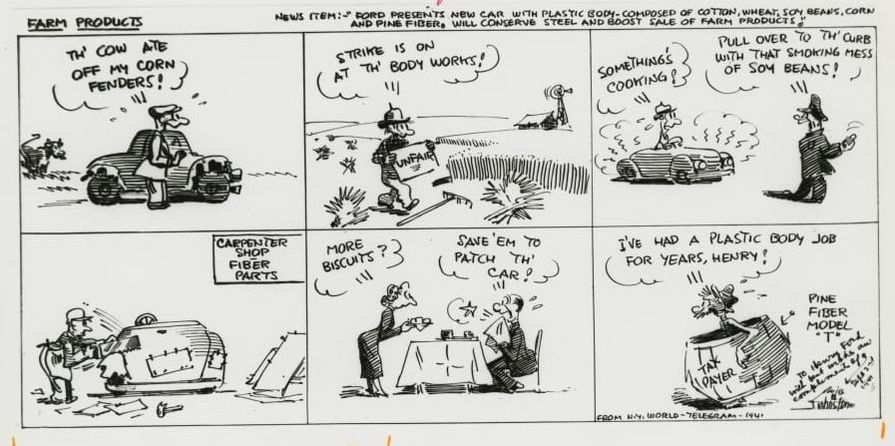
 RSS Feed
RSS Feed
